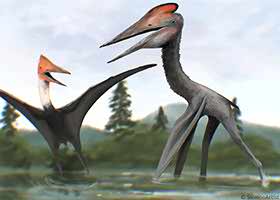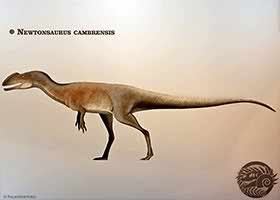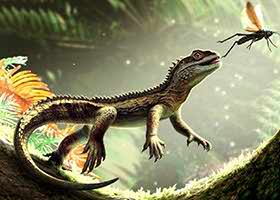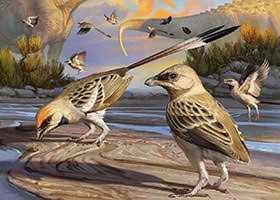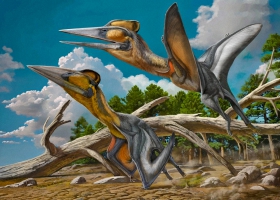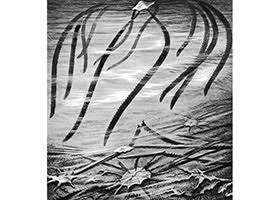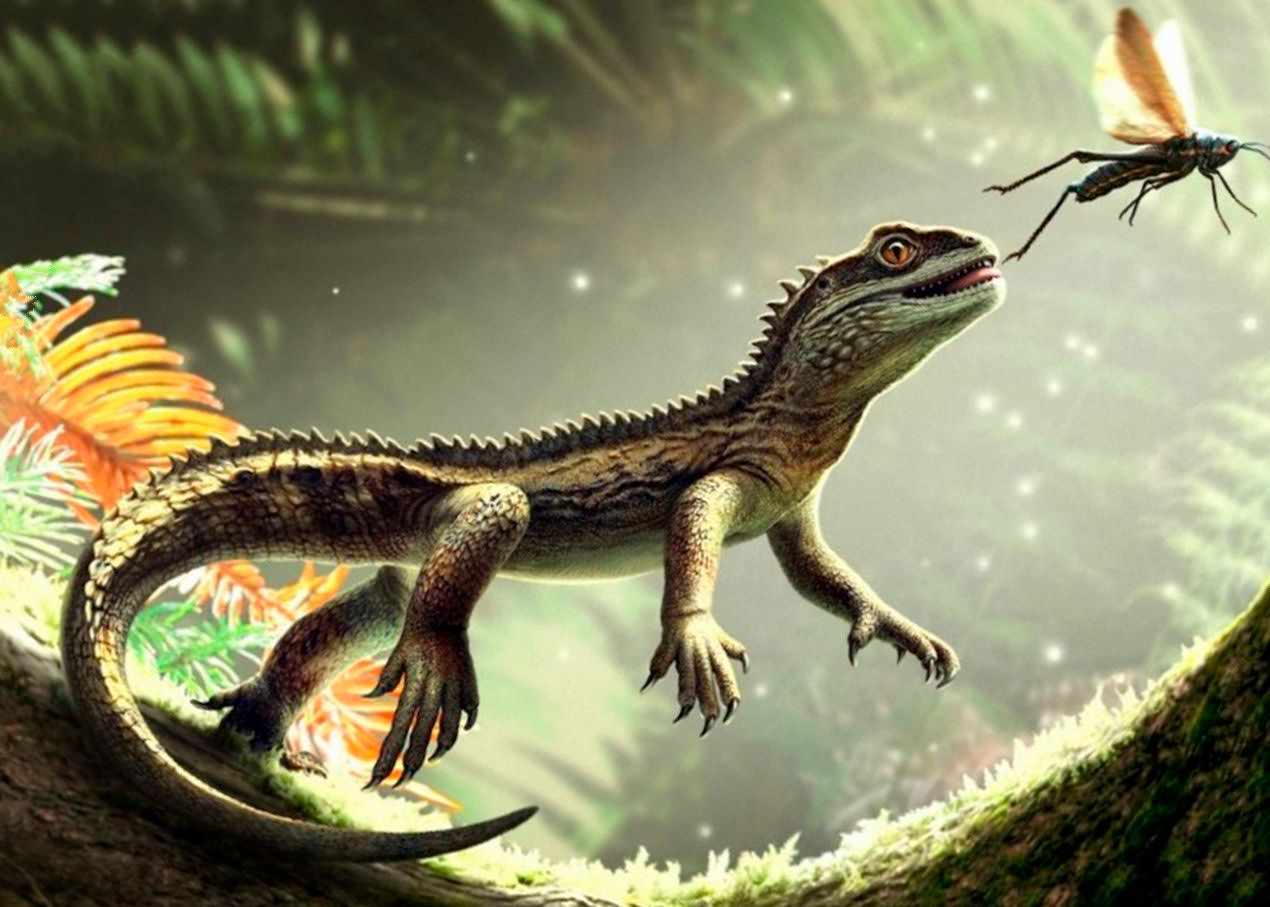
Agriodontosaurus oldest known lepidosaur, lived approximately 244 million years ago in what is now Devon, England. This small Triassic reptile, only 10 centimeters long, was a nimble hunter of large insects, armed with unusually large teeth. These features are reflected in its name, Agriodontosaurus helsbypetrae, which, in fact, means “sharp-toothed lizard from Helsby Rock,” a reference to both its unique dentition and the sandstone formation where it was discovered. Scientists today recognize this creature as the oldest known member of Lepidosauria—a diverse reptile group that gave rise to extinct marine mosasaurs as well as modern lizards, snakes, and tuataras.
Discovery and Age
The only known specimen of Agriodontosaurus was discovered in 2015 on an exposed section of the coast in the Helsby Sandstone Formation, near Sidmouth, Devon. The rocks there, in particular, date back to the late Anisian stage of the Middle Triassic, approximately 244–241.5 million years ago. Consequently, this makes the fossil several million years older than previously known rhynchocephalians, such as Wirtembergia (late Ladinian, 238 Ma). The sandstone preserved partial skeletal remains, including the skull, jaws, vertebrae, and parts of the limbs and girdles. Despite its small size—the skull was only about 14 millimeters long—the bones show a remarkable variety of adaptations.
Anatomy: Built for the Hunt
At first glance, Agriodontosaurus looked like a tiny lizard. Indeed, its body, about 10 centimeters long, suggests it was fast and agile. However, what set it apart was its dental system. The rather massive lower jaw had fewer teeth than other early lepidosaurs. In the front of the jaws, there were strong, conical teeth perfect for seizing prey, while the back featured large, broad, triangular teeth that could shear and slice through tough chitinous cuticles. Ultimately, this unusual combination of piercing and cutting teeth was unique among Triassic lepidosaurs.
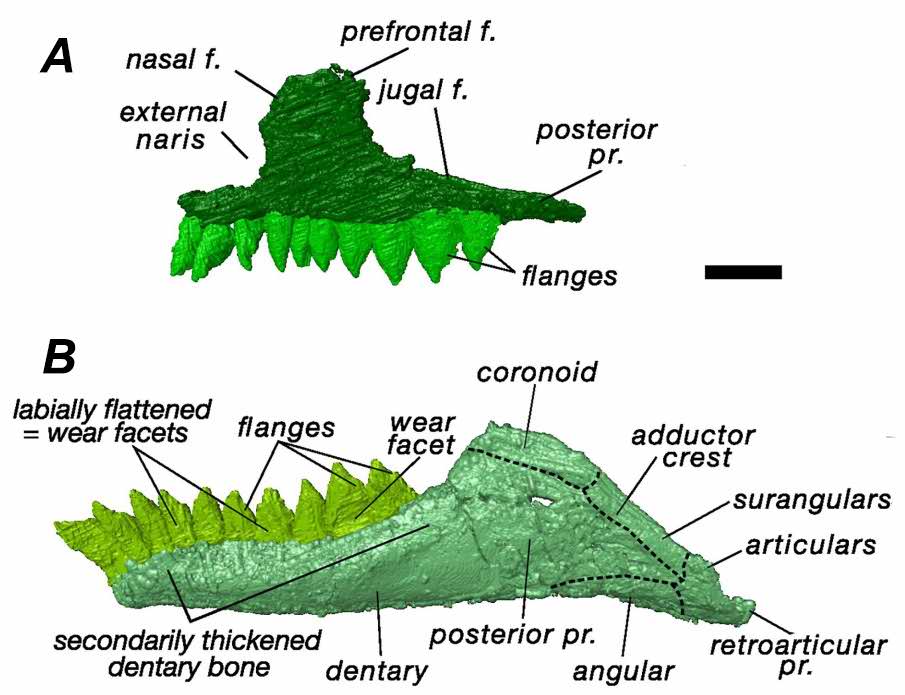
The teeth met in a way that allowed the upper and lower jaws to cut against each other, leaving wear facets that confirm the animal was an active predator. In the front, the teeth were attached directly to the top of the tooth-bearing bones (acrodonty) (2). In contrast, the posterior teeth were pleuracrodont (3). Overall, the upper and lower jaws each had 10 teeth.
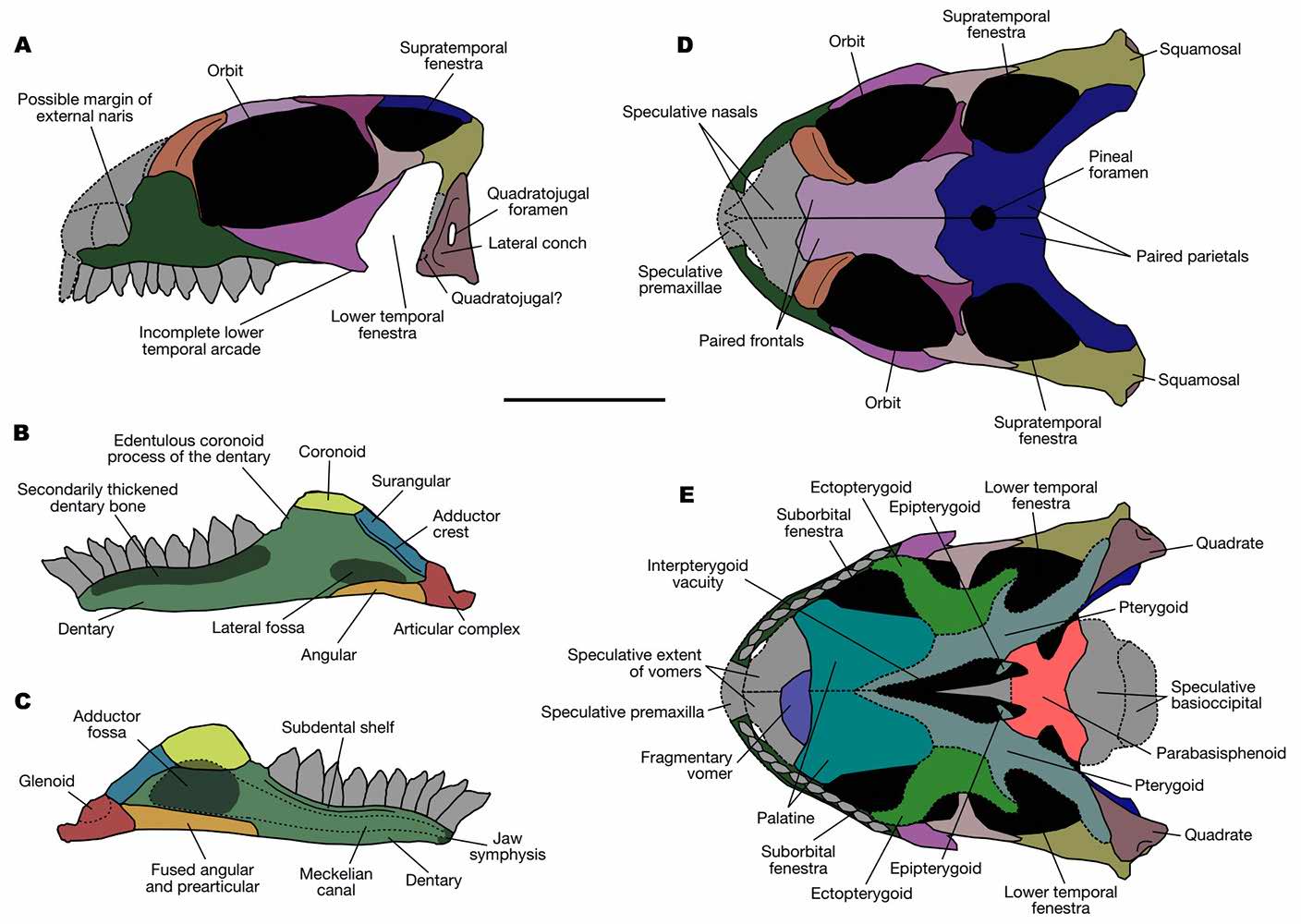
The skull shows additional features, such as strong jaw muscles, a wide gape, and robust connections between the skull elements. All these characteristics meant that this small reptile could deliver a powerful bite, hold onto struggling prey, and then tear it into bite-sized pieces. Based on the structure of the teeth and skull, scientists believe that Agriodontosaurus hunted arthropods, including cockroaches, grasshoppers, and crickets, which were abundant in Triassic landscapes. Furthermore, like the tuatara, the skull of Agriodontosaurus was akinetic (1), unlike that of other lepidosaurs.
Senses and Feeding Style
Large eye sockets suggest sharp vision, while features of the ear bones indicate keen hearing. Certainly, both of these traits were vital for catching fast-moving prey like crickets and cockroaches.
Interestingly, Agriodontosaurus lacked the small teeth on its palate and pterygoids, which is unique for early lepidosaurs. This is noteworthy because many other early reptiles used palatal teeth to grip food. Instead, its enlarged marginal teeth did most of the work, and researchers believe it might have used its tongue—much like a modern tuatara—to secure prey before delivering a shearing bite.
Where is the Agriodontosaurus Oldest Lepidosaur Placed in the Family Tree?
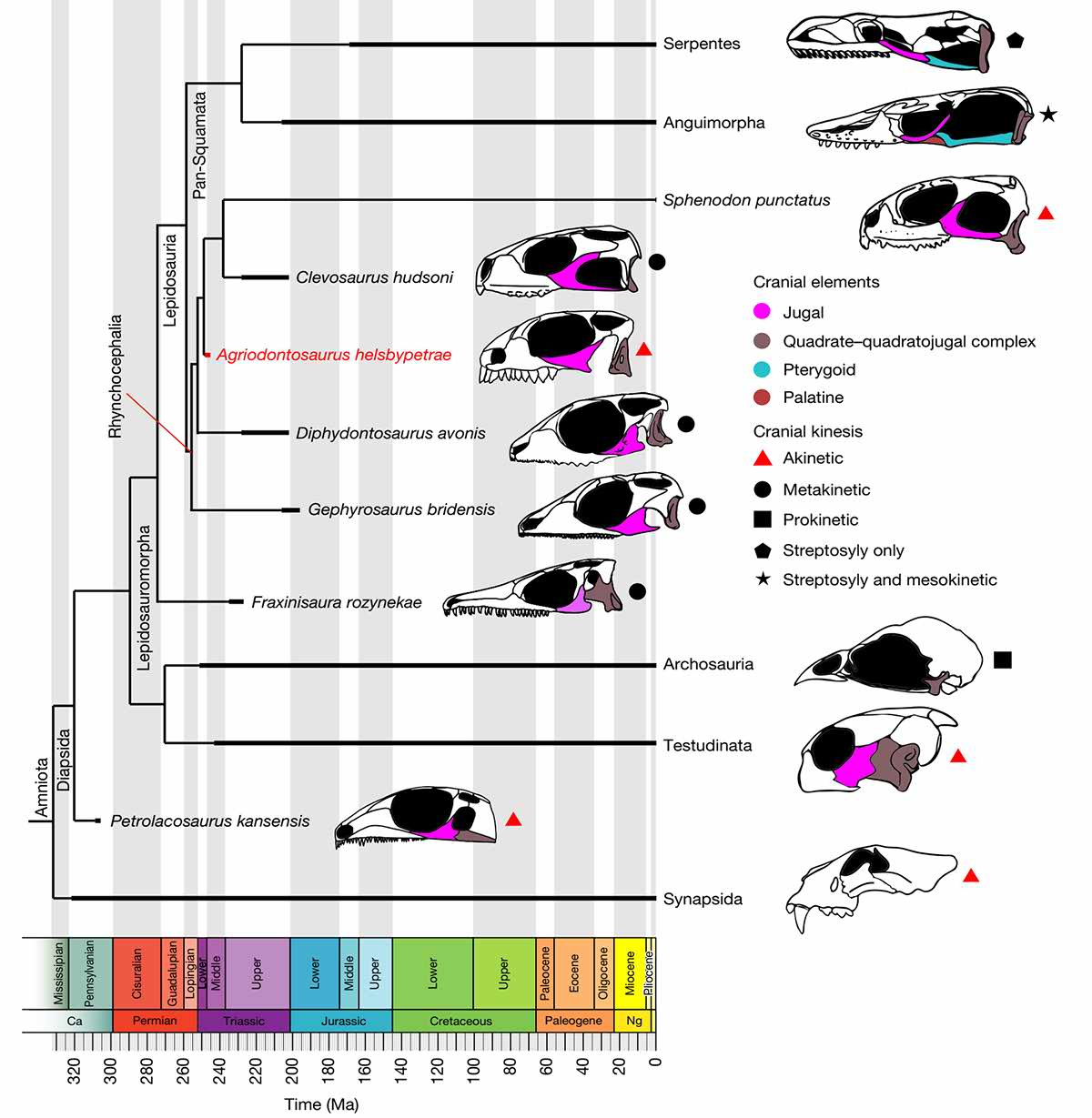
The lepidosaur Agriodontosaurus belonged to the Rhynchocephalia, within the clade Sphenodontia—the same lineage as modern New Zealand tuataras. Its skeleton displays a mix of ancestral traits alongside advanced dental adaptations.
Yet its age secures it as Agriodontosaurus oldest lepidosaur, putting it at the very beginning of a group that today includes over 12,000 species of living lizards and snakes. Furthermore, its discovery provides support for a European origin for the Lepidosauria. Agriodontosaurus sets the minimum age for the origin of the entire Lepidosauria group at 245–241 million years ago. Respectively, the maximum age, or lower boundary, is likely close to the beginning of the Triassic period, 252 million years ago.
Life in the Triassic
The world that Agriodontosaurus inhabited was recovering from the catastrophic extinction at the end of the Permian period, which had wiped out most species on Earth. By the middle of the Triassic, ecosystems had stabilized, and new groups of reptiles were emerging.
In the area of what is now Devon, river plains and desert conditions prevailed, as evidenced by the red sandstones of the Helsby Formation. These rocks formed in a hot, arid, continental climate. In this harsh landscape, Agriodontosaurus served as an agile insect predator, with its sharp teeth and quick movements perfectly suited for survival in challenging conditions.
A Tiny Pioneer

Despite its small size, Agriodontosaurus helsbypetrae represents the dawn of an incredibly successful reptile lineage. With its specialized teeth, sharp senses, and active predatory lifestyle, it foreshadowed many ecological strategies that were later perfected by lizards and snakes. Today, when we see a gecko snatch a cricket or a lizard basking on a rock, we are witnessing ancient behaviors. Their origins stretch back nearly a quarter of a billion years to a small but fierce hunter from the shores of Triassic Devon.
Source:












